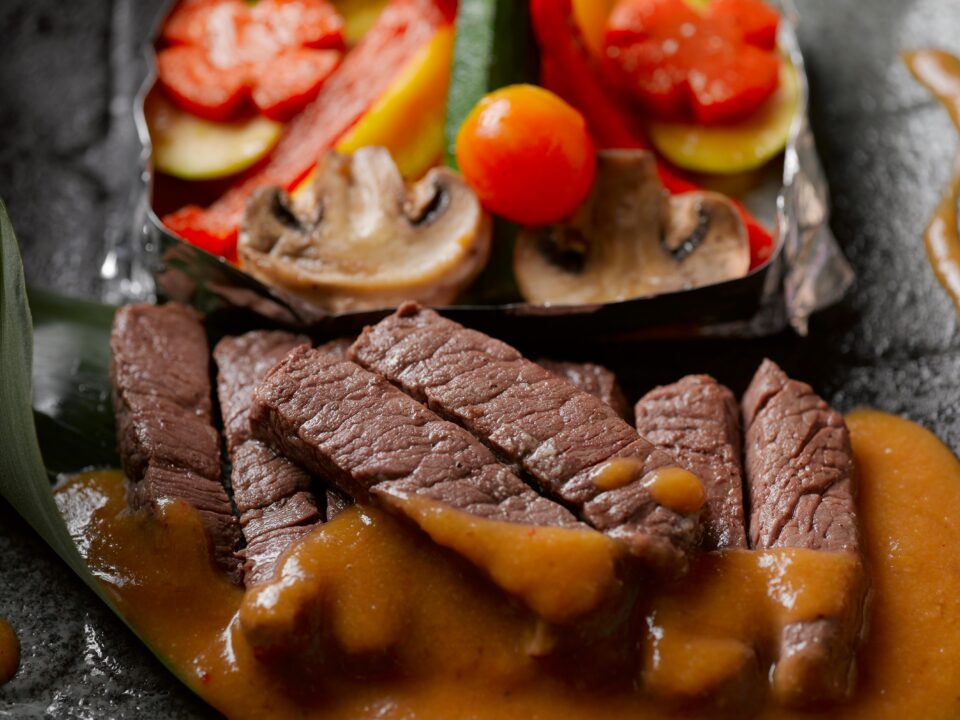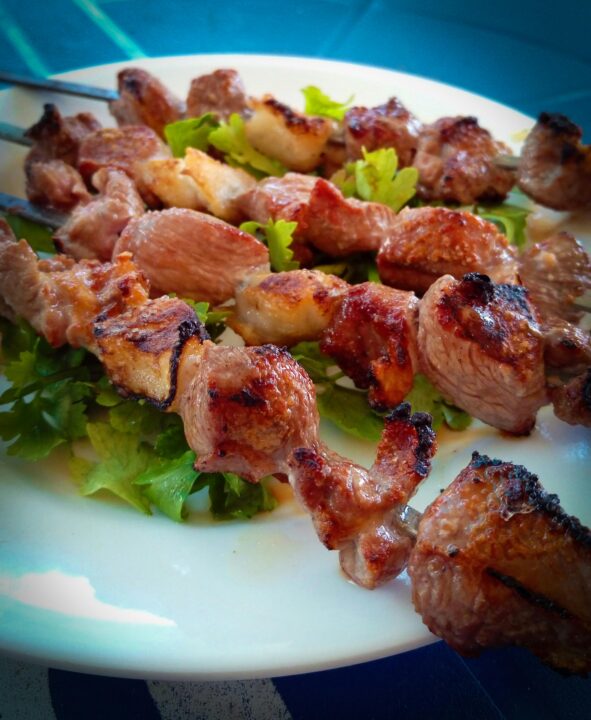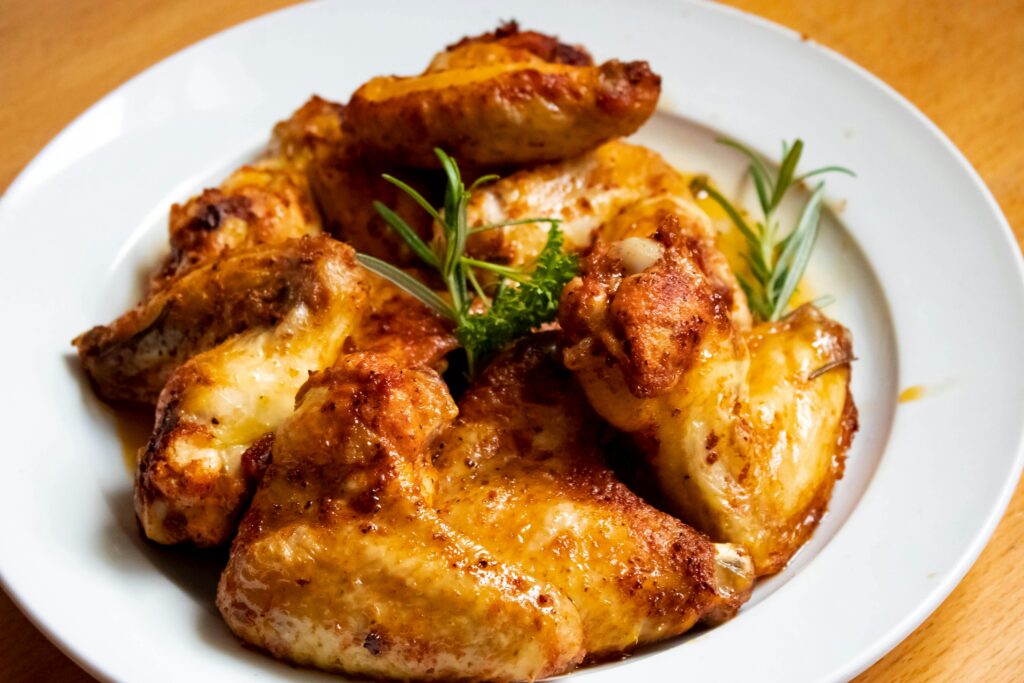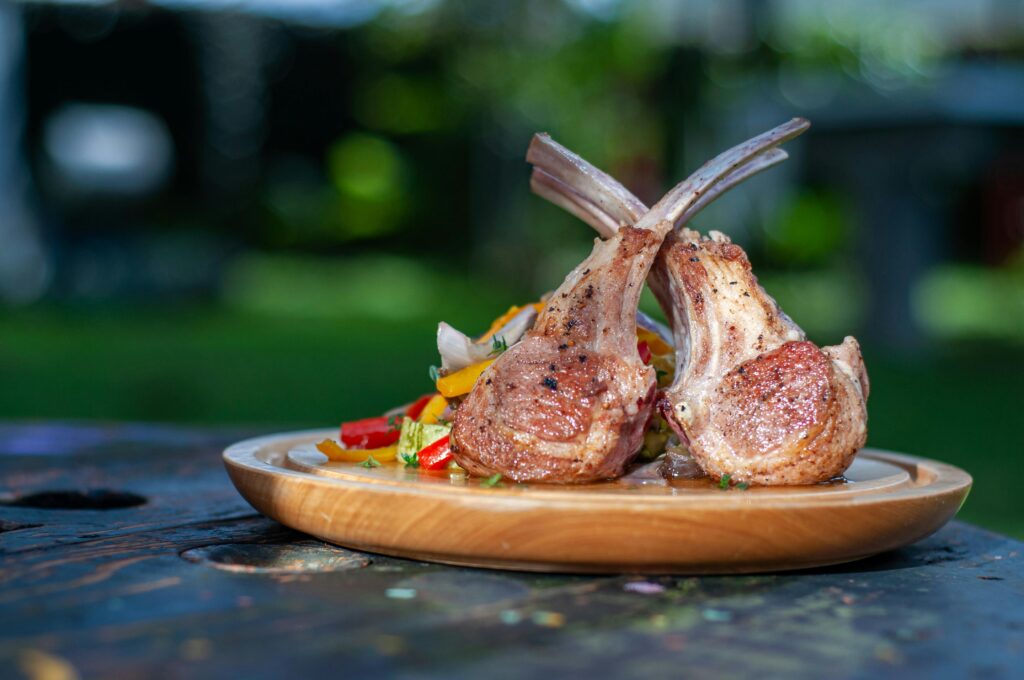There are many varieties of meat and each has its own nutritional value. But generally speaking, meat is a protein-packed meal packed with other essential nutrients, such as vitamins and minerals. Incidentally, meat is a fundamental ingredient in many diets worldwide.
Types of meats include pork, rabbit, lamb, beef, veal, mutton, and poultry meat (like chicken, duck and turkey). Game meats such as venison, bison, and elk and other exotic meats eaten in certain parts of the world, including kangaroo, frog and guinea pig
In this article, we will explore the various types of meat mentioned, highlighting their unique benefits, nutritional values, downsides, and some considerations for consumption.
Types of Meat, Pros, Cons and Their Nutritional Value
Meat supplies the body with essential nutrients that promote mental, physical and emotional well-being. Red meats generally boost energy levels, improve metabolism, build a strong immune system and boost overall brain health. However, on the flipside meats can be harmful when consumed in excess.
For example, too much meat intake may lead to heart disease, cause early death, result in diabetes, and even cause certain kinds of cancer. So you must eat them sparingly or in smaller servings. Below are different types of meat pros and cons of each and their nutritional value.
1. Beef

Beef comes from cattle and is one of the most widely consumed meats globally. Beef is the major meat that comes to mind when we speak of red meat. It includes various cuts such as steak, roast, hamburgers, ground beef and brisket.
Nutritional values
Beef is rich in protein, iron, zinc, fat, omega 3, omega 6 and B vitamins like B12 and niacin.
Pros
- It provides essential nutrients for muscle growth and repair, energy production, and thorough bodily health. Beef contains a large quantity of vitamin B12, zinc and iron. Also, it contains an important healthy fatty acid known as oleic acid. Oleic acid is also perceived as heart-healthy.
Cons
- Beef is high in saturated fat and has many calories. For some individuals, high consumption of beef increases iron circulation in the body to a high level, which may result in cardiovascular disease and cancer.
2. Pork

Pork is meat from pigs, it’s a very popular meat eaten by many people around the world. It can also be classified as red meat because it has a high amount of myoglobin (a protein substance), which is responsible for the meat’s red colour. Common cuts in pork include pork chops, hot dogs, bacon, jamon, salami, prosciutto ham, sausages and pork loin
Nutritional values
Pork is rich in protein and minerals. According to data published by USDA FoodCentral Disease, pork has a high calorie content. For example, 100 g of pork contains 263 kcal. It also has many other nutrients, such as omega 6 and omega fatty acids (1670mg and 70mg), saturated fat (7.9g), and fat (21g).
It has vitamins like vitamin B1 (thiamin), vitamin B6, niacin, riboflavin, and vitamin B12. Furthermore, minerals like phosphorus, potassium, iron, magnesium, zinc, selenium, etc, are also found in pork.
Pros
- Has a high content of thiamin (about 49% DV in 100g of pork), which works excellently to protect heart health. Thiamin also plays a great role in the metabolism of glucose. Zinc and selenium are high in pork and these minerals help to boost the immune system.
Cons
- Due to pork’s high-fat content, it is more susceptible to bacterial contamination as well as other diseases associated with food than other types of meat. So ensure to cook the pork well before consumption.
3. Chicken

Chicken is one of the most popular meats worldwide, among beef and pork. It comes under the poultry category and it’s not red meat but rather classified as white meat. Chicken is a lean, protein-rich meat that is relatively affordable. Some common cuts include breasts, thighs, wings and drumsticks.
Nutritional values
Calories (143 kcal), protein (17.4g), fat (8.1g), monounsaturated fat (3.6 g), polyunsaturated fat (1.5 g), saturated fat (2.3 g) and omega 3 and 6 fatty acids (96mg and 1327mg). Vitamins: thiamin, niacin, riboflavin, vitamins B6 and B12, folate. Minerals: iron, magnesium, phosphorus, potassium, zinc, selenium, sodium, copper, etc.
Pros
- It’s high in protein, B vitamins and lower in fat compared to red meats. Chicken is a lean protein source rich in nutrients like niacin, selenium, zinc, potassium and phosphorus. It provides essential amino acids for muscle building and repair, as well as supporting immune function and bone health.
- Affordable
- Chicken broth or stock, is a good source of gelatin.
Cons
- It is prone to bacterial infections like salmonella and E.coli, so ensure to cook till well done. Eating raw chicken isn’t the best option.
4. Turkey
Turkey is often associated with holiday meals, especially on Christmas, New year and Thanksgiving days, but it is consumed year-round. It’s leaner and drier than chicken and has a slightly different flavor. Turkey is lower in fat and calories when compared to some other kinds of meat.
Turkey can be processed or unprocessed; it could be either toast turkey or turkey bacon. Turkey cuts include breast, thighs, and ground turkey. It’s a good source of protein and various vitamins and minerals.
Nutritional values
Calories (149 kcal in 100g), good source of protein (17.5 g), fat (8.3g), omega 3 fatty acid (110 mg), omega 6 fatty acid (1800 mg), saturated fat (2.3g). It contains vitamins like vitamin K, thiamin, niacin, riboflavin, vitamin B6, vitamin B12, and folate. Turkey has minerals like phosphorus, potassium, calcium, zinc, iron, copper, selenium, etc.
Pros
- Turkey is low in fat and calories but very high in protein; in fact, it is regarded as the most protein-dense among other kinds of meat, which makes it a nutritious meat choice.
- It also contains vitamins and minerals like B vitamins, selenium and zinc, which support immune function, metabolism, and overall health.
- Inexpensive
Cons
- It has more food-related bacteria compared to red meat.
5. Lamb and Mutton

Lamb is meat from young sheep, while mutton is meat from an old sheep. It is commonly used in Mediterranean and Middle Eastern cuisines. Just like pork and beef, the common cuts in lamb include lamb chops, leg of lamb, and lamb shoulder.
Nutritional values
Calories (282 kcal in 100g), good source of protein (about 16.6 g), fat (23.4 g), omega-3 fatty acid (420 mg), omega-6 fatty acid (1360 mg), saturated fat (10.2g). It contains vitamins like vitamin K, thiamin, niacin, riboflavin, vitamin B12, and folate. Minerals like phosphorus, potassium, calcium, zinc, selenium, etc, can be found in lamb and mutton.
Pros
- Lamb is high in protein, iron, zinc, selenium and B vitamins such as B12 and riboflavin. It offers essential nutrients for red blood cell production, immune support, and energy metabolism.
Cons
- Expensive
6. Duck
Duck meat is not a popular type of meat but can be found more in Asian dishes, especially among Chinese dishes. Duck is white meat and provides a lot of nutrients. Duck cuts include duck breast, legs, and confit.
Nutritional values
For 100 grams of duck, you can find calories (132 kcal), protein (18.3g), fat (5.9g), omega-6, and 3 fatty acids (670mg and 80mg). Presence of vitamins A, C, E, K, thiamin, niacin, folate and vitamins B6 and B12. Minerals include iron, zinc, phosphorus, copper, selenium, potassium, magnesium and sodium.
Pros
- Has a substantial amount of B vitamins, phosphorus and selenium, and these allow the immune system to function maximally.
Cons
- Limited availability.
7. Venison
Venison refers to meat from deer, typically hunted in the wild and is a rare kind of meat. It’s leaner than beef and beloved to have a healthy prestige among venison consumers. However, let’s find out if that prestige is truly justified. Some common cuts include venison steaks, and roasts. It’s a good source of protein and iron.
Nutritional values
In 100 grams of venison, it has: calories (157 kcal), protein (21.8g), fat (7.1g), saturated fat (3.4g), and 3 and 6 fatty acids (104mg and 225mg). Venison has a high content of vitamin B6 and B12, riboflavin, niacin, thiamin, iron, phosphorus, zinc and selenium.
Pros
- Venison are low-fat because they feed and live in the wild. Also, they have a higher amount of minerals and vitamins compared to beef and are regarded as one of the most nutrient-dense meats for consumption.
Cons
- Expensive
- Sometimes deer can be infected with CWD (chronic wasting disease), which can be harmful to human health if consumed when it’s not well cooked.
8. Bison
Bison meat, also known as buffalo meat, is leaner and lower in fat compared to beef. For low fat and low calorie lovers, bison is your go to meat. Bison has cuts like bison steaks, burgers, and roasts. It’s high in protein and iron.
Nutritional value
100g of bison contains 146 kcal of calories, no carbohydrate, protein (20.2 g), fat (7.2g), omega 3 and omega 6 fatty acids (38 mg and 261mg), thiamin, riboflavin, niacin, folate, vitamin B6 and B12. Also, bison contains minerals like phosphorus, iron, potassium, zinc, copper, selenium, sodium, etc.
Pros
- Bison meat is lean and provides high-quality protein, iron, zinc, and B vitamins. It offers similar nutritional benefits to beef but is lower in fat and has fewer calories.
Cons
- Expensive
9. Rabbit
Rabbit meat is lean, nutrient-dense and tender, with a mild flavor. It’s commonly used in some parts of European, Asian, US and Mediterranean cuisines. Surprisingly, rabbit is a French delicacy and a very popular meat in France.
Nutritional value
For 100g of rabbit meat: calories (136 kcal), protein (20g), fat (5.5g), omega 3 and 6 fatty acids (220mg and 860mg), thiamin, riboflavin, niacin, folate, vitamin B6 and B12. Rabbit meat contains minerals like phosphorus, iron, potassium, zinc, copper, selenium, sodium, magnesium, etc.
Pros
- Rabbit meat is high in selenium and vitamin B12.
- It is low in calories and fat and as a result, it is protein-dense.
- It offers the best ratio of omega-3 and 6 fatty acids compared to other meats.
- It provides essential nutrients for muscle function, red blood cell production, and energy metabolism.
Cons
- Rabbit meat is susceptible to infection, especially the ones in the wild, because they’re infected with pathogens (tularemia) occasionally.
10. Goat Meat
Goat meat is popular in many cultures around the world, especially in Africa and Asia but is very uncommon in America. Goat meat is considered lean meat and is much leaner than beef and pork.
Nutritional values
For 100g of goat meat, you’d find: 143 kcal of calories, 27.1g of protein, 3.03g of fat, 20mg and 130mg of omega 3 and 6 fatty acids. Vitamins include Thiamin, riboflavin, niacin, folate and vitamin B12. Minerals include phosphorus, iron, potassium, zinc, copper, selenium, sodium and manganese.
Pros
- A high source of vitamin B12, low calories and a higher amount of protein.
Cons
- Goat meat is scarce in most US stores
11. Game Meat (Pheasant and Wild Boar)
Game meat refers to meats from wild animals hunted for consumption. This category includes wild boar, deer and pheasant. Game meat tends to have a richer taste than some domesticated meats. Pheasant is a popular meat in the US and Europe and considered a flavorful premium meat. Wild boar is a wild pig. It has higher amount of protein than domestic pig
Nutritional values of pheasant
Calories (281 kcal), protein (22.7g), fat (9.3g), and 3 and omega-6 fatty acids (100mg and 810mg). Vitamins found in pheasant are as follows: Thiamin, riboflavin, niacin, folate and vitamin B6 and B12. Minerals include phosphorus, iron, potassium, zinc, copper, selenium, sodium and manganese.
Pros
High source of B vitamins
Cons
No known concern.
Nutritional values of wild boar
Calories (160 kcal), protein (28.3g), fat (4.4 g) omega 3 and omega-6 fatty acids (30mg and 500mg). It contains vitamins like vitamin K, thiamin, niacin, riboflavin, vitamin B12, and folate. Minerals like phosphorus, potassium, calcium, zinc, selenium, etc, can be found in wild boar.
Conclusion
This article has discussed the different types of meat available for consumption. Some are popular in some countries and regions. A few of these meats are caught in the wild, while a host of others are domestic animals. Note that their nutritional content depends on the quantity you want to consume at a given time.
Meats can be boiled, fried, baked or roasted. Also, there are different forms of preparing meat steak, they include blue rare, rare, medium rare, medium well and well done. It is advised to cook your meat till well done to avoid food poisoning or contamination due to some bacteria or pathogens present in some meats.


